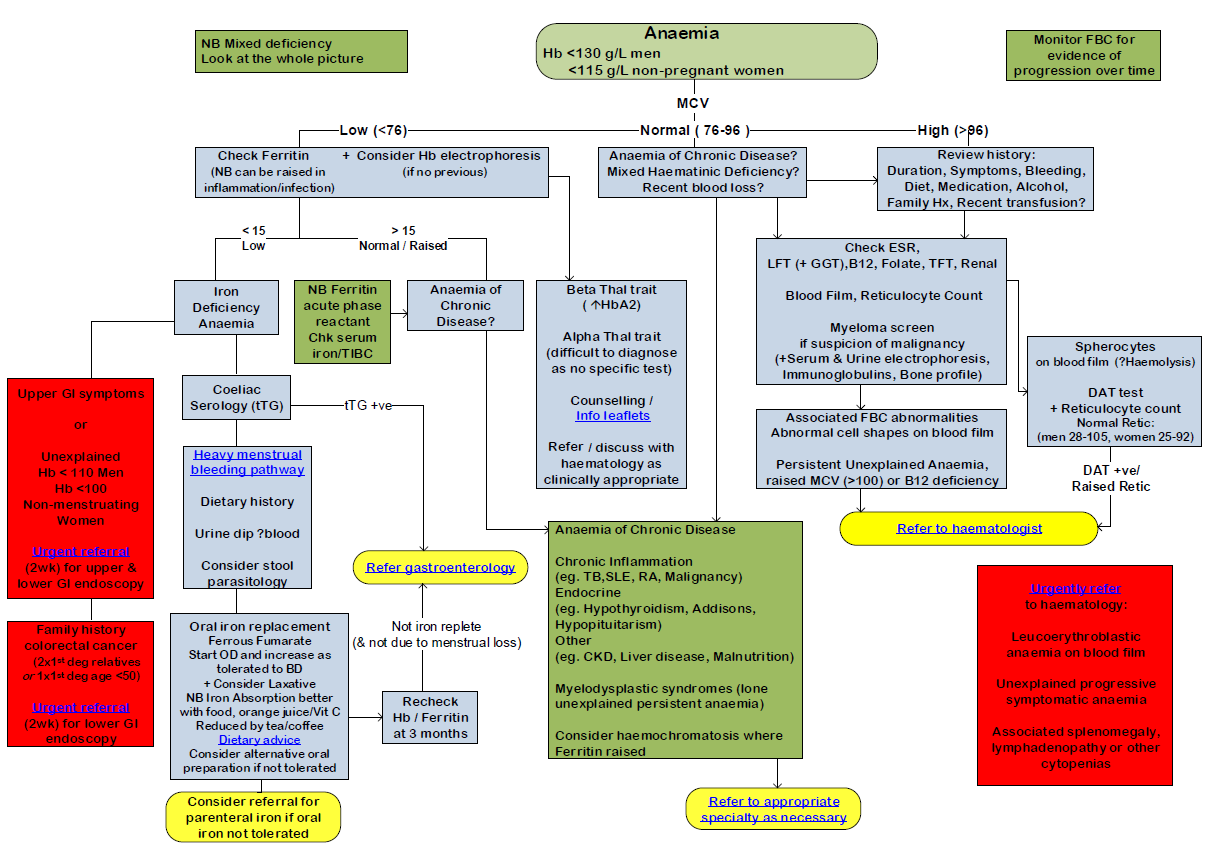anemia
Last edited 10/2019 and last reviewed 11/2023
Anaemia can be described as a reduction in the haemoglobin concentration to below 13.5 g per decilitre in an adult male and below 11.5 g per decilitre in an adult female.
The World Health Organization uses the following haemoglobin thresholds to define anaemia individuals living at sea level:
- children
- 0.50–4.99 yrs - 11 g/dl
- 5.00–11.99 yrs - 11.5 g/dl
- 12.00–14.99 yrs - 12 g/dl
- women
- non-pregnant women (≥15 yrs) - 12 g/dl
- pregnant women - 11 g/dl
- men (≥15 yrs) - 13 g/dl (1)
Anaemia is not a disease in itself, but may reflect an underlying disease process. It may also result from an increase in plasma volume and a dilutional effect - for example, as occurs during pregnancy.
It can be classified according to the blood film; thus red cells with a low mean cell volume (MCV) appear small and pale - microcytic; those with a large MCV appear large and oval shaped - macrocytic. Alternatively, the red blood cells may be normal in size and shape but may be reduced in number - normocytic.
An alternative classification is with respect to the underlying mechanism.
A schemata for considering the management of anaemia in an adult is presented (2):

References:
- (1) World Health Organization (WHO) 2008. Worldwide prevalence of anaemia 1993–2005: WHO global database on anaemia
- (2) NHS Camden CCG. Abnormal FBC guidance - for adults (Accessed 30/10/19)